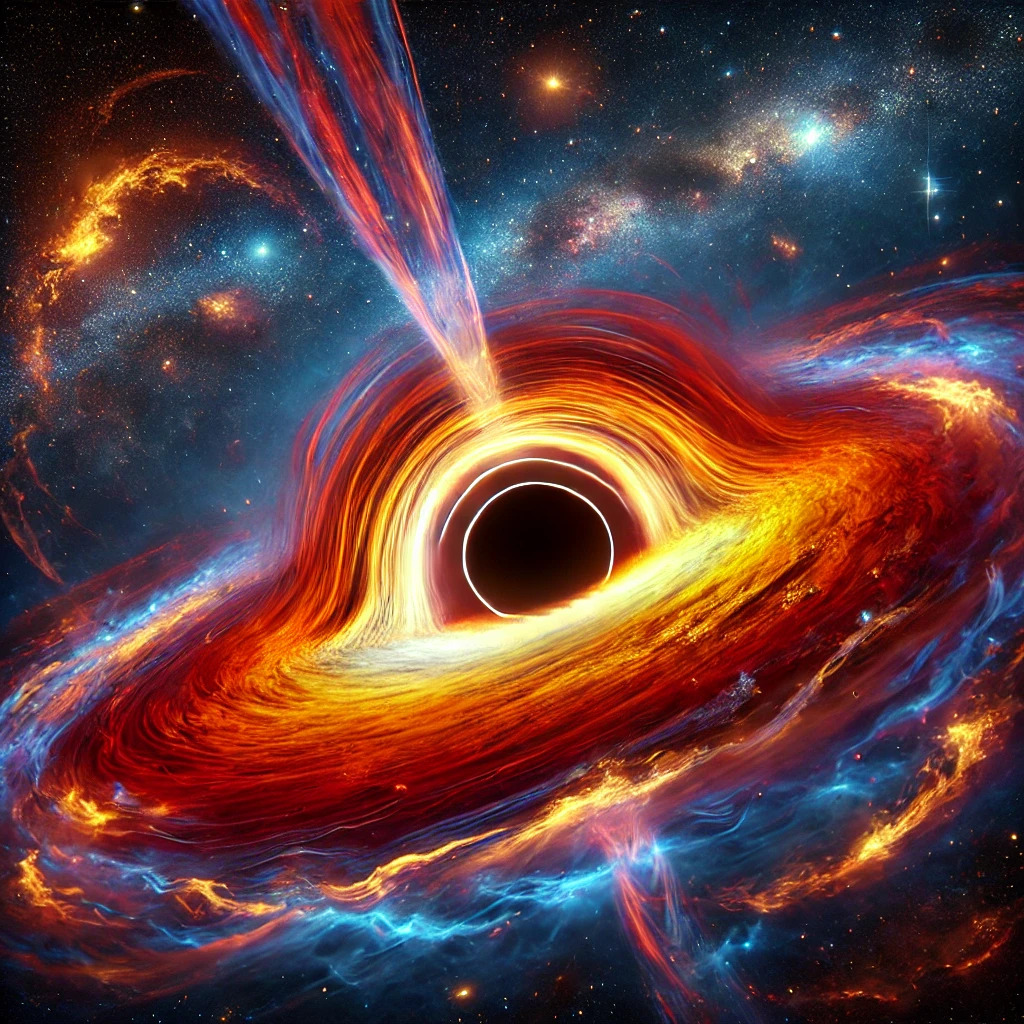Introduction: The Invisible Giants of the Universe
Black holes are among the most fascinating and mysterious objects in the cosmos. True space predators, they challenge our understanding of physics and force us to rethink the concepts of space and time. Despite their invisible nature, their impact on the universe is enormous. Over the centuries, our knowledge of them has grown, transforming these celestial bodies from simple mathematical theories into tangible realities confirmed by astronomical observations. But what exactly are they? How do they form? And what happens to the matter they swallow?
Theoretical Origins: From Early Studies to Confirmation
The idea of an object so massive that it could trap even light dates back to the 18th century when scientists John Michell and Pierre-Simon Laplace hypothesized the existence of "dark stars." However, their theory remained speculative until the advent of Albert Einstein's general relativity in 1915. With this revolutionary theory, gravity was no longer seen as a traditional force but as a curvature of space-time caused by the mass of objects. Karl Schwarzschild calculated the first exact solution to Einstein’s equations, defining the concept of the Schwarzschild radius, the distance beyond which nothing can escape a black hole’s gravity. However, for years, these objects remained a theoretical enigma until Roger Penrose and John Wheeler demonstrated that black holes could actually form in nature. Today, thanks to modern instruments, we can finally observe and study them directly.
What Are Black Holes?
A black hole is a region of space where gravity is so intense that nothing, not even light, can escape. This happens because matter is compressed into an extremely small volume, creating a gravitational singularity, a point where classical physics laws cease to function. The event horizon marks the boundary beyond which everything is irreversibly drawn toward the singularity. Beyond this barrier, any information becomes unreachable, making it impossible to directly observe what happens inside the black hole. This characteristic makes them extremely difficult to study, but thanks to indirect techniques such as analyzing the behavior of surrounding matter and gravitational waves, scientists are making significant progress in understanding them.
Types of Black Holes
Not all black holes are the same. There are different types, each with unique characteristics and different formation processes:
Stellar black holes: Formed from the gravitational collapse of massive stars at the end of their life. With masses ranging from a few to dozens of times that of the Sun, they are among the most common black holes, observable due to their accretion disks and gravitational effects on nearby stars.
Intermediate-mass black holes: A missing link in our understanding of black hole evolution. With masses between hundreds and thousands of solar masses, these objects may represent an intermediate stage between stellar black holes and supermassive black holes. However, evidence of their existence is still scarce and under study.
Supermassive black holes: True cosmic giants, with masses of millions or even billions of times that of the Sun. Found at the center of galaxies, including our Milky Way, they play a crucial role in galaxy formation and evolution. Their growth process is still under study, but they are thought to form through matter accretion and the merger of smaller black holes.
Primordial black holes: Hypothetical objects formed in the early moments of the universe, when quantum fluctuations could have created regions of extremely high density. Although they have never been observed, if they exist, they could explain part of the dark matter that makes up the universe.
The Birth of a Black Hole
A black hole is primarily born from the gravitational collapse of a massive star at the end of its life cycle. During its final phase, the star exhausts the nuclear fuel that counteracts gravity. If the mass is sufficient, internal pressure can no longer maintain equilibrium, and the core collapses on itself, forming a singularity. During this process, a supernova explosion can occur, releasing enormous amounts of energy into the universe. However, this is not the only formation method: some black holes can emerge from the merger of two smaller black holes or through the gradual accretion of matter over time.
Can They Die? Hawking Radiation
Stephen Hawking proposed in 1974 that black holes are not eternal but emit a form of energy known as Hawking radiation. This process occurs due to quantum fluctuations near the event horizon, which create pairs of virtual particles. One particle falls into the black hole, while the other escapes, subtracting energy from the black hole itself. Over trillions of years, a black hole could completely evaporate, although for supermassive black holes, the required time would be vastly longer than the current age of the universe.
Where Does the Swallowed Matter Go?
One of the greatest mysteries concerns the fate of matter that falls into a black hole. Some theories suggest it is compressed into the singularity, while others hypothesize it might emerge elsewhere in the universe through wormholes, or that space-time itself is altered. Is the information of the swallowed matter destroyed, or can it be recovered? This dilemma, known as the information paradox, remains unsolved and represents one of the biggest challenges in theoretical physics.
The Future of Black Hole Research
Thanks to advanced tools like the Event Horizon Telescope, which captured the first image of a black hole in 2019, and gravitational waves detected by LIGO, our understanding is rapidly advancing. The future may reveal even more surprising details about these cosmic behemoths and their role in shaping the universe’s destiny. Modern astrophysics is getting closer to unveiling the secrets of these space monsters, with profound implications for our understanding of the cosmos and the fundamental laws of physics.








Leave a Comment